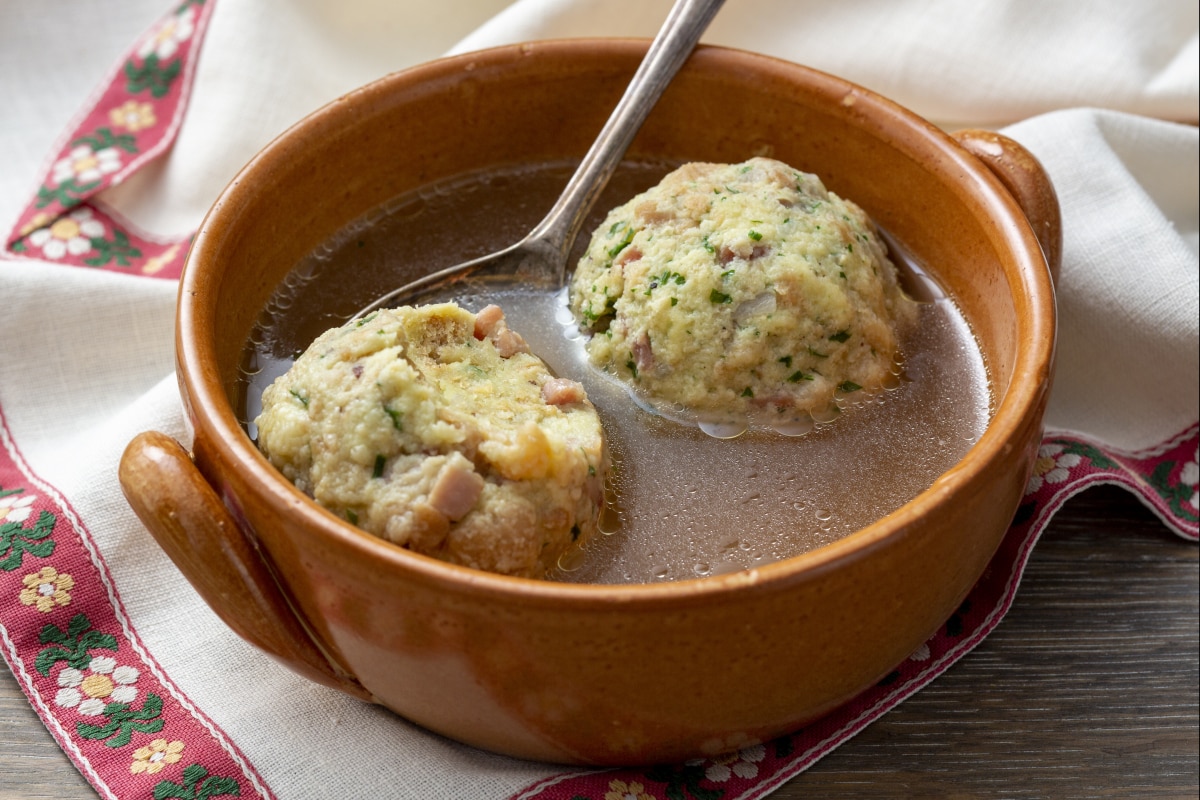Strangolapreti alla trentina
- Easy
- 45 min
- Kcal 183

Dumplings, like meatballs, are always sure to be a big hit, and can be cooked in a thousand different ways that vary from one region to another and depending on individual tastes. Come with us, if you will, on a journey to the Trentino-Alto Adige region, where they’ve been making Knödel, or canederli, for centuries! These hearty bread dumplings are made with stale white bread, chives, eggs, speck, and onion (Tyrolean-style), and with the addition of smoked lucanica sausage if you make them Trentino-style. Every family has its own secret way of preparing these dumplings with just the right consistency, not too hard or too soft, but one thing everyone agrees on is that meat broth is the tastiest and most authentic way to cook and enjoy them. If you’d rather serve them with butter instead, you can boil them in boiling salted water before dressing them. We’ve gone with a recipe for Tyrolean-style dumplings that was registered on August 8, 2003, but we’ve also picked up some tips from people who’ve been making them at home for decades using a recipe handed down through the family, who maintain that these dumplings must be “dirty,” with clearly visible pieces of meat and chives. We’ve chosen a pretty rustic version, with a dough that compacts and combines without losing the flavor or appearance of the bread. You’ll find many different types of dumplings served in restaurants, delis, and at fairs these days, some with spinach, some with herbs, others with beets, but the best introduction to Italian dumplings are undoubtedly the classic Tyrolean Knödel! So, ready to be whisked away to the Alps?

To make your Knödel, first prepare the meat broth and keep it warm. Next, peel and finely chop the onion 1. Cut the speck into very small pieces 2 of around 110 inch (2-3 mm) 3.

Melt the butter in a pan over low heat 4, then add the onion 5 and speck 6. Brown for 5 minutes, stirring frequently.

Then turn off the heat and set aside 7. Chop the chives and parsley 8, then cut the stale bread into cubes of around ¼ inch (0.5 cm) 9.

Pour the bread into a bowl and add the milk (start with ¾ cup (200 g) and add more if the mixture is too dry and not very malleable) 10. Add the eggs 11 and the chopped chives and parsley 12.

Continue adding the warm speck and onion 13, and start mixing everything together 14. If the mixture is too dry, add more milk. If it’s gone too sticky or soft, try adding a little flour to the mixture. Once the mixture is ready, moisten your hands a little with cold water and shape the dumplings by rolling the dough between your hands. The dumplings should be around 2 inches (5 cm) in diameter 15.

Place them on a tray as you shape them 16. You should end up with around 10 of them. Once they’re ready, you’ll need to cook your dumplings in the boiling meat stock 17, which should take around 15 minutes at a moderate simmer. Serve your Knödel (Tyrolean-style dumplings) piping hot 18.